Castlevania: Every Easter Egg And Video Game Reference In Season 3
Table of Contents
Castlevania has returned, complete with all the high-octane action and horror fans have come to love. Here’s every video game Easter Egg in season 3.
You Are Reading :Castlevania Every Easter Egg And Video Game Reference In Season 3
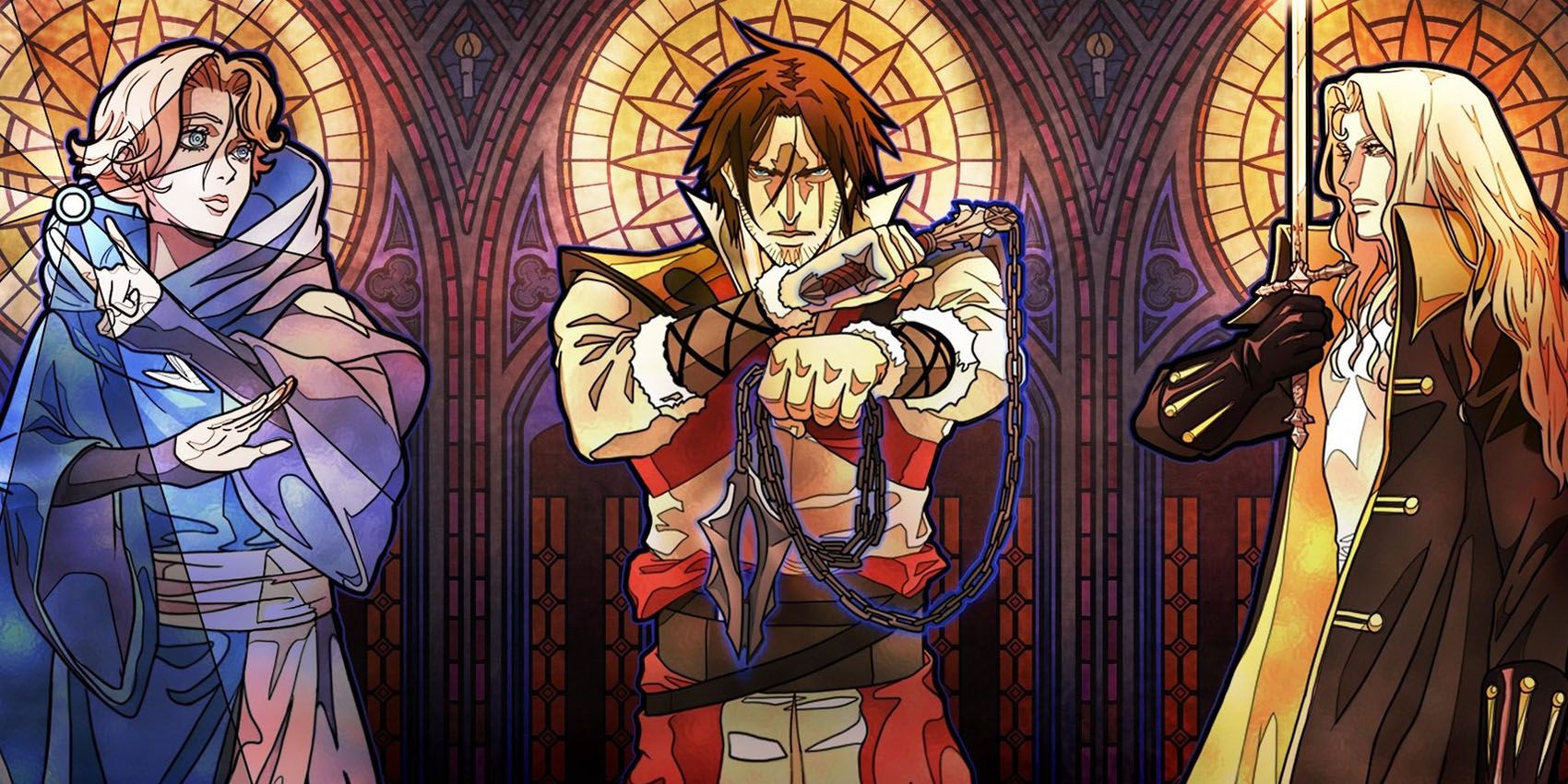
Netflix’s Castlevania season 3 is available for streaming right now, and it features a ton of references to the classic video game series. The show, written by Warren Ellis and part of Adi Shankar’s “Bootleg Universe” of pop culture properties, is an adaptation of the game Castlevania 3: Dracula’s Curse. It follows disgraced monster hunter Trevor Belmont, resourceful sorceress Sypha Belnades, and cursed dhampir (half-breed vampire) Alucard as they attempt to take down Alucard’s father, Dracula Vlad Tepes, before he can wipe out humanity in revenge for the murder of his wife.
The third season, which officially released on March 5, picks up right after the explosive ending of the second season, in which our trio of heroes successfully defeat Dracula. Things aren’t all fine and dandy however, as the cunning vampire queen Carmilla has a plan to reduce the human race to livestock for her and her sisters, while the Forgemaster Isaac carves a bloody path across Europe in search of revenge. And amidst it all, the quaint town of Lindenfeld that Trevor and Sypha choose to rest in seems to have a lot more going on underneath the surface.
Amidst the stunning action sequences and the bone-chilling horror elements of the show, Castlevania season 3 is also filled to the brim with references from the video game series’ long and storied history. From certain NPC’s making their television debut to full-fledged bosses and monsters making an appearance, here are all of the most noteworthy Easter eggs within the season.
Isaac’s Quest of Revenge
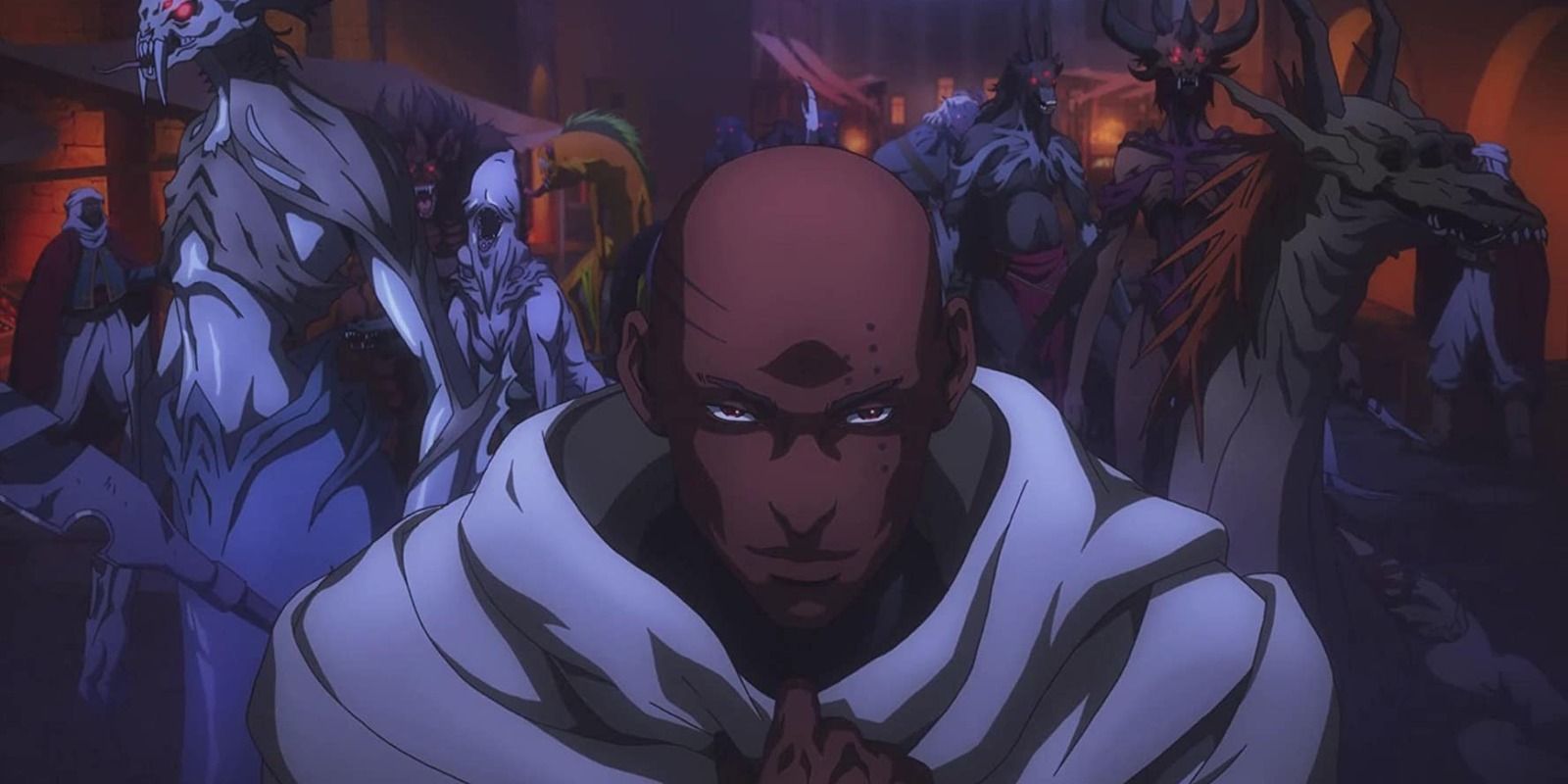
At the end of last season, both of Dracula’s Forgemasters find themselves on two radically different paths. Hector inadvertently helps Carmilla betray Dracula in the penultimate episode, while Isaac, loyal to the end, is thrust through a portal into the desert as several different forces lay siege to Dracula’s castle. Season 3 picks up right where the second season left off, with Hector now enslaved to Carmilla and her sisters and Isaac on a quest to hunt down Carmilla and Hector for revenge.
While this storyline is original to the series, it does have a pseudo-origin from the games. In Castlevania: Curse of Darkness, which takes place 3 years after Dracula’s Curse, Hector decides to settle down and live a peaceful life. However, his life is upended when rival Forgemaster Isaac decides to have his wife killed, sending him on a quest for revenge that leads him back to Dracula’s Castle. The roles have been inverted, but the idea of Isaac on a quest for revenge in response to Hector’s betrayal feels like an overt, if reversed, reference to the plotline of Curse of Darkness.
Count Saint Germain
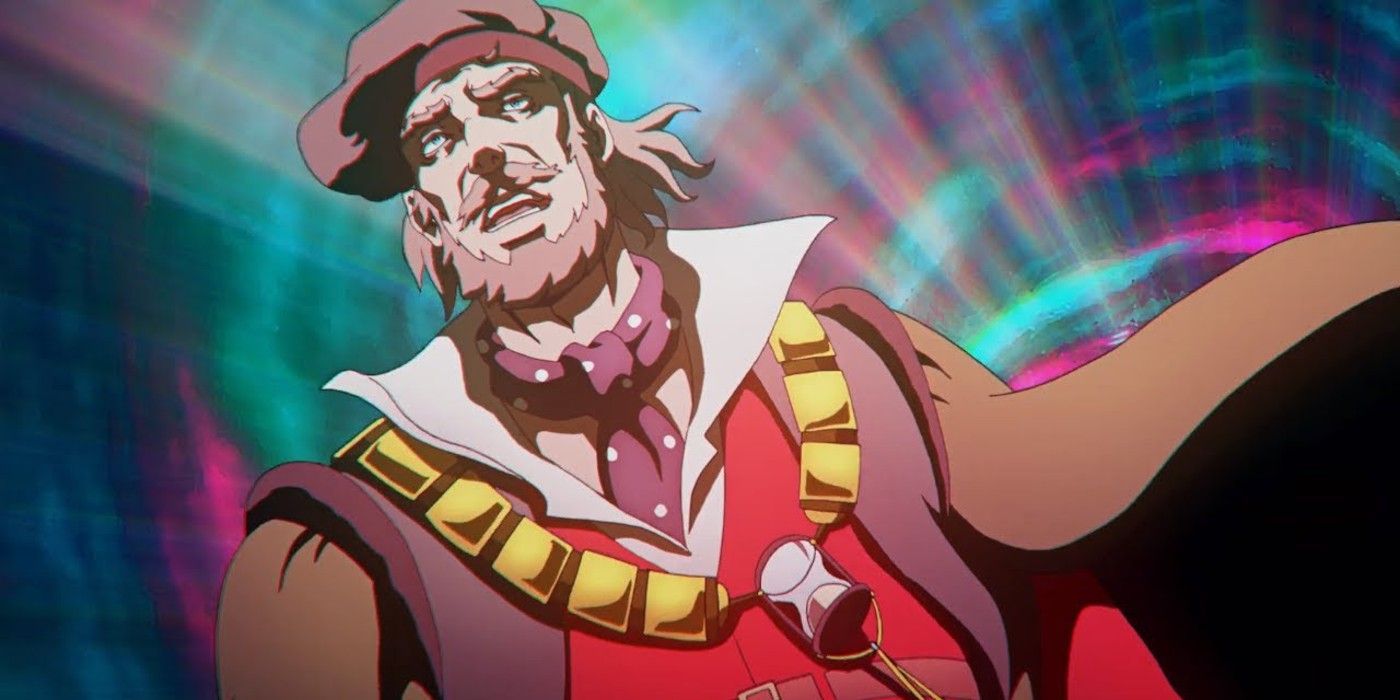
The enigmatic Count Saint Germain makes his first appearance in the aforementioned Castlevania: Curse of Darkness, dressed in an extravagant red tuxedo. In the game he’s a mysterious NPC who shows up from time to time to convince Hector to abandon his quest for revenge, usually dropping knowledge of events that have yet to happen.
The series version of him is relatively similar, with some distinct differences, such as his dry wit and his quest to find his time-displaced lover. Indeed, while the game heavily implies Saint Germain is a time-traveler, the Netflix series takes this even further.
The Infinite Corridor
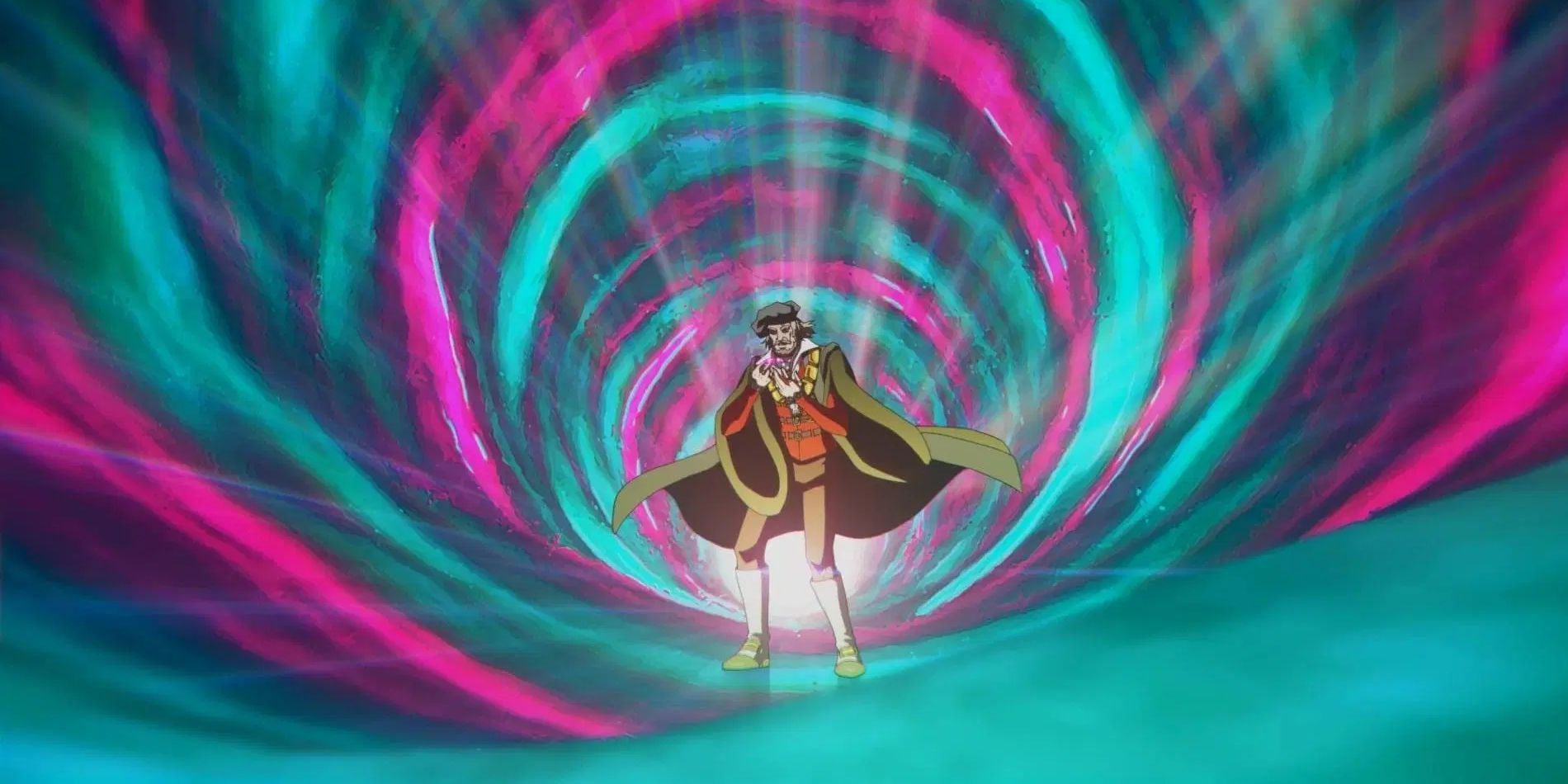
In the show, The Infinite Corridor is a realm-between-worlds that can be used to traverse different periods throughout time and space. Count Saint Germain spends most of the season searching for a portal to the Corridor, as he’s been inside it before and actually lost a lover to the interdimensional realm. While the show expands on the Infinite Corridor by giving it an existentially horrific Lovecraftian quality, the concept was actually first introduced in Curse of Darkness as a level within the game that Hector visits, and the main boss of the area is Dullahan, a headless knight that appears in multiple different Castlevania games.
There’s a scene in the third season where Saint Germain has a flashback to the Infinite Corridor where we see potential references to other settings within the Castlevania series. One of the places shown is a strange pyramid within a desert. This might be a potential reference to the Nintendo DS game Castlevania: Portrait of Ruin, in which there’s an Egyptian-themed level named Sandy Grave.
The most puzzling time-period shown is certainly a glimpse of the far, far future, in which bipedal mech droids walk around what looks like a desert in Africa. There are a couple of different things the series could be referencing here. For starters, this could be a nod to the Metal Gear series, another franchise developed by Konami, in which bipedal mechanical weapons are a major trope. This could also be a reference to Castlevania: Lords of Shadow 2, a sequel to a reboot of the series that takes place in both the past and the future in which giant mechanical droids are an enemy. Finally, this could also be a reference to 2035, the setting of the games Castlevania: Aria of Sorrow and Dawn of Sorrow, which follow fan-favorite character Soma Cruz, a character producer Adi Shankar has already expressed a lot of interest in.
Reverse Dimension
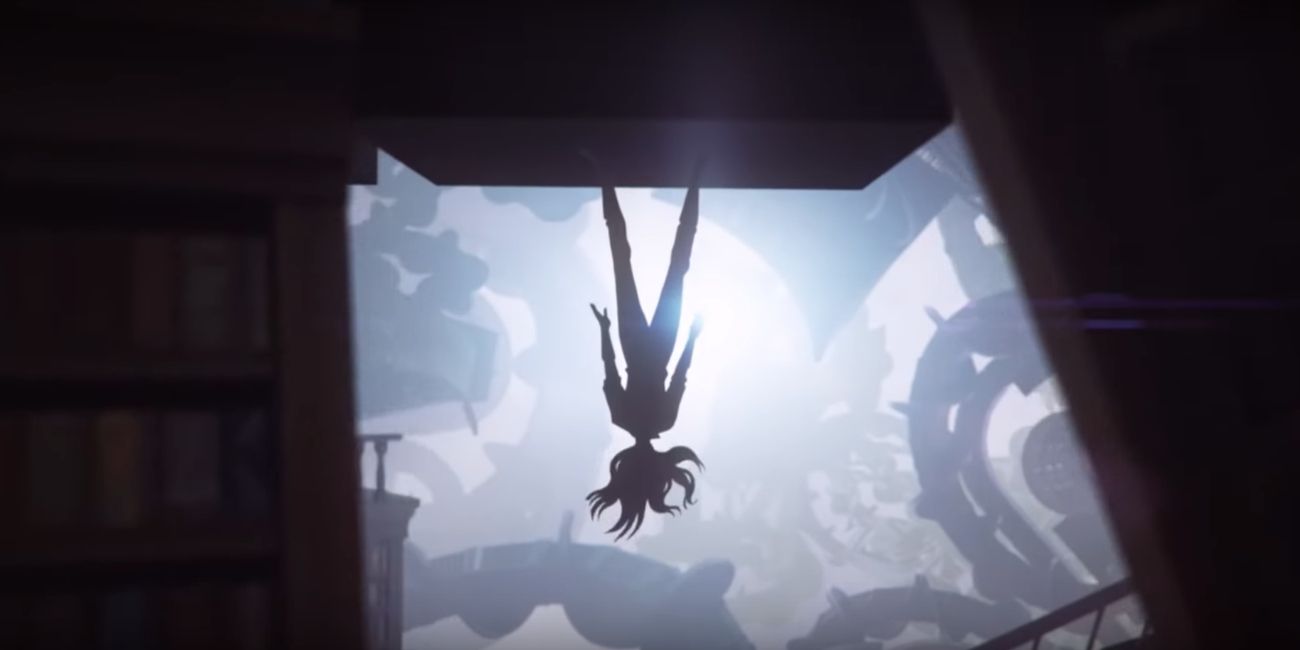
There’s also another aspect of the Infinite Corridor worth exploring. Whenever Saint Germain recalls the lover he lost exploring the Corridor, she’s always shown silhouetted in what looks like an upside-down castle. This is more than likely a reference to the game Castlevania: Symphony of the Night, which follows Alucard on a journey through his father’s castle years after Dracula’s defeat. It’s known for an iconic twist in which the entirety of Dracula’s castle is flipped upside-down after defeating the midpoint boss in the game. If the Netflix series plans on ever branching out into the timeline of different games, Symphony of the Night would make perfect sense within the context of the show.
Carmilla’s Castle
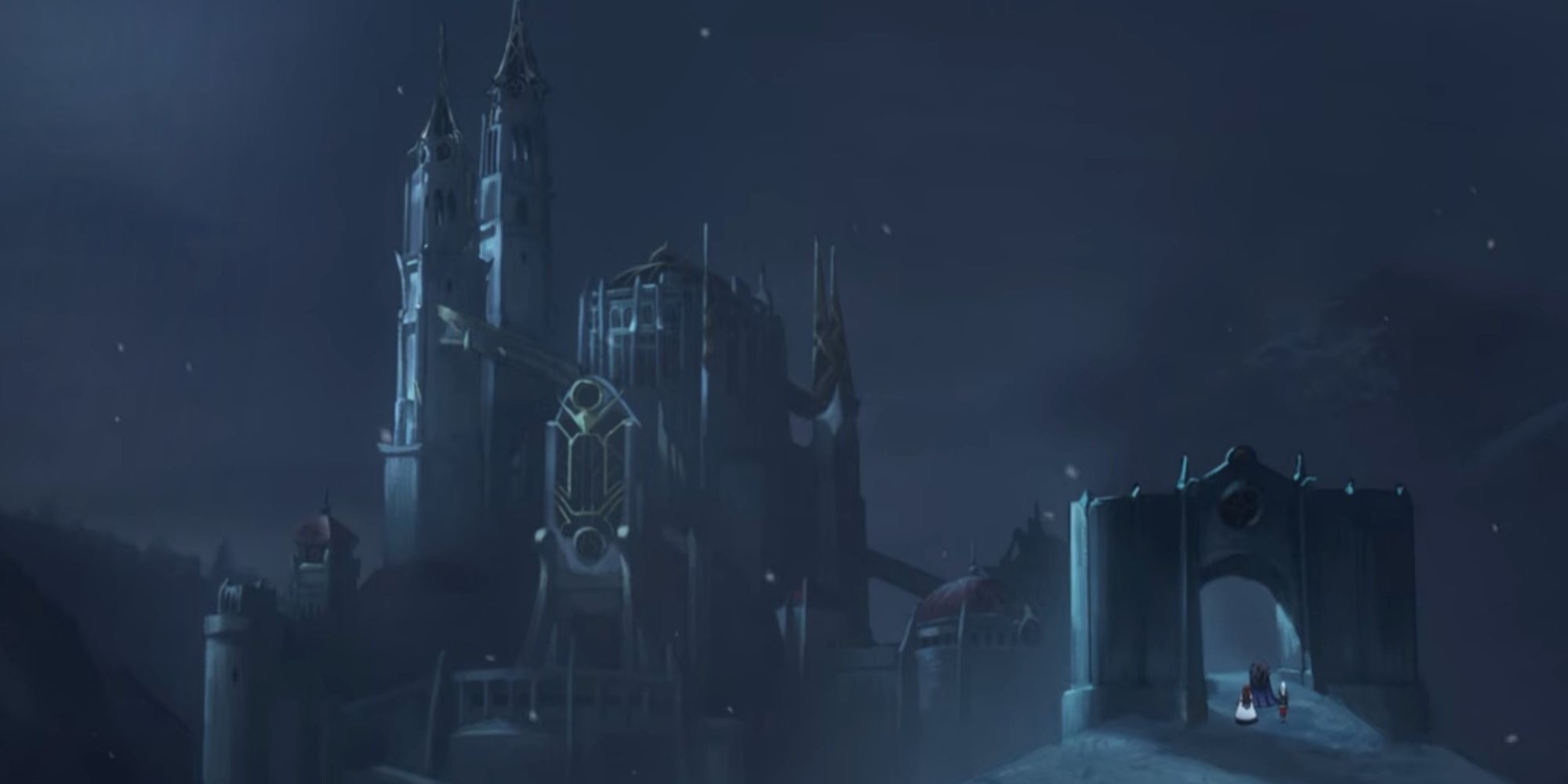
A big chunk of the third season of Castlevania is dedicated to Carmilla and her sisters working on a scheme to essentially cull humanity and use the remaining people as livestock. This subplot takes place in Styria, where Carmilla’s sisters rule from a massive castle as queens. This is a two-fold reference, as Carmilla’s castle made an appearance in several games (most notably in Castlevania: Circle of the Moon and the Lords of Shadow reboot series), as well as the fact that Styria is a real state in Austria, the country where Carmilla’s castle is canonically located in the games.
Monsters From The Games
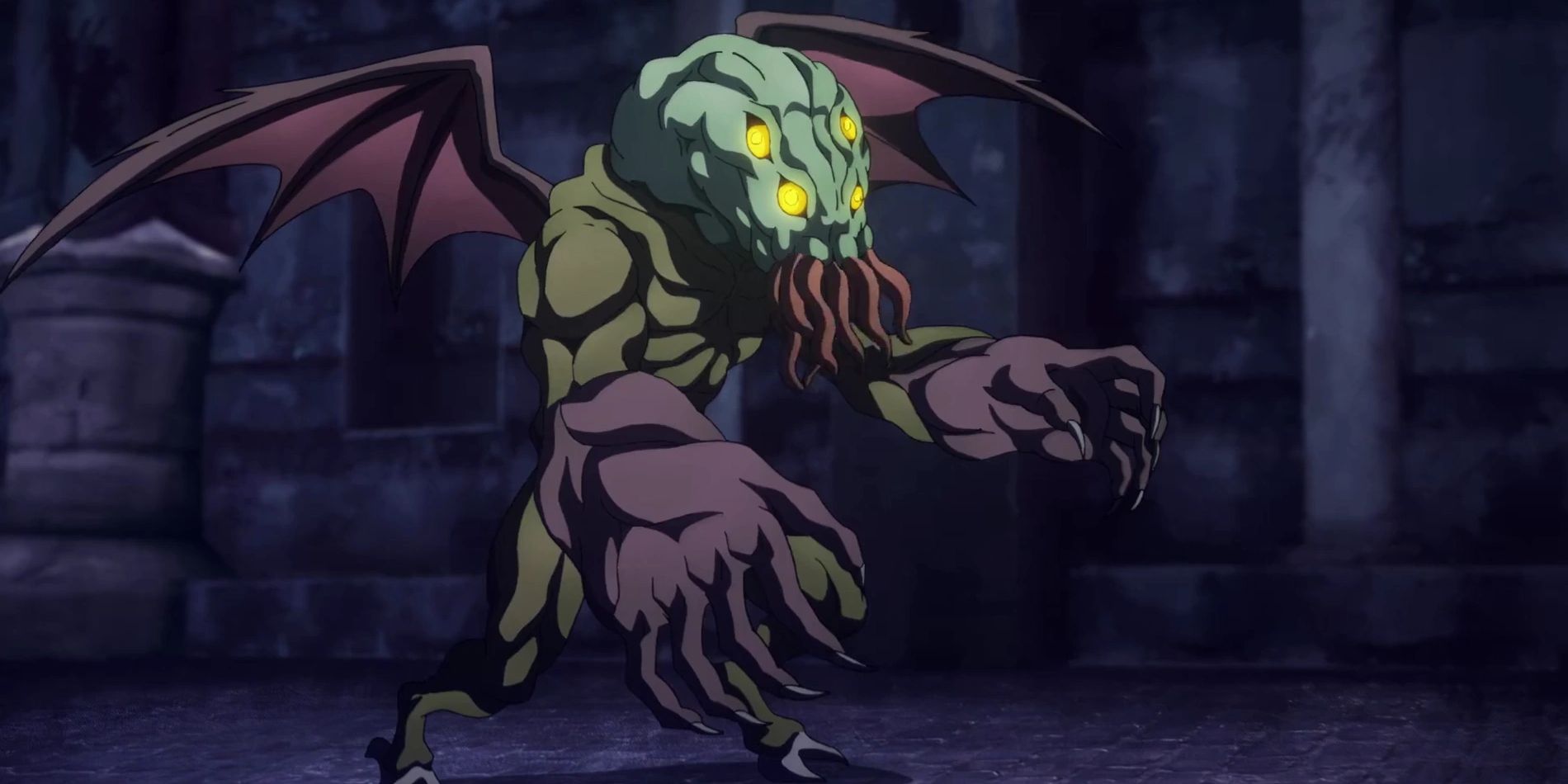
Throughout the entire Netflix series, but specifically season 3, the show sneaks in appearances from several notable monsters from the video game series, such as the Minotaur Trevor and Sypha fight in the first episode. From small references such as the iconic Mermen showing up among Isaac’s ranks of night creatures, to even more obvious references such as the Fire Demon from Castlevania: Symphony of the Night coming through the portal to Hell, season 3 is filled to the brim with references to creatures from the games.
In the tenth episode of the third season, “Abandon All Hope,” Trevor and Sypha can be seen fighting multiple demons that have come through the portal to Hell. One of these demons is Malachi, an instantly recognizable enemy type from Symphony of the Night. He’s most easily identifiable by his Lovecraftian-inspired design, with his head resembling that of Lovecraft’s most famous creation, Cthulhu.
However, the most overt reference to an enemy from the video game series comes in episode 9, “The Harvest.” In it, Isaac goes to confront the Magician responsible for magically enslaving a small village near his castle. As Isaac makes his way to confront the Magician, the nameless sorcerer starts to use the villagers to attack. As Isaac nears his castle, the Magician resorts to his last trick and summons all the villagers together in a massive sphere of bodies, a reference to the video game boss Legion. Legion is a boss that has appeared throughout multiple games in the Castlevania series, and Warren Ellis himself has confirmed that this is the show’s version of Legion.
Dracula’s Resurrection
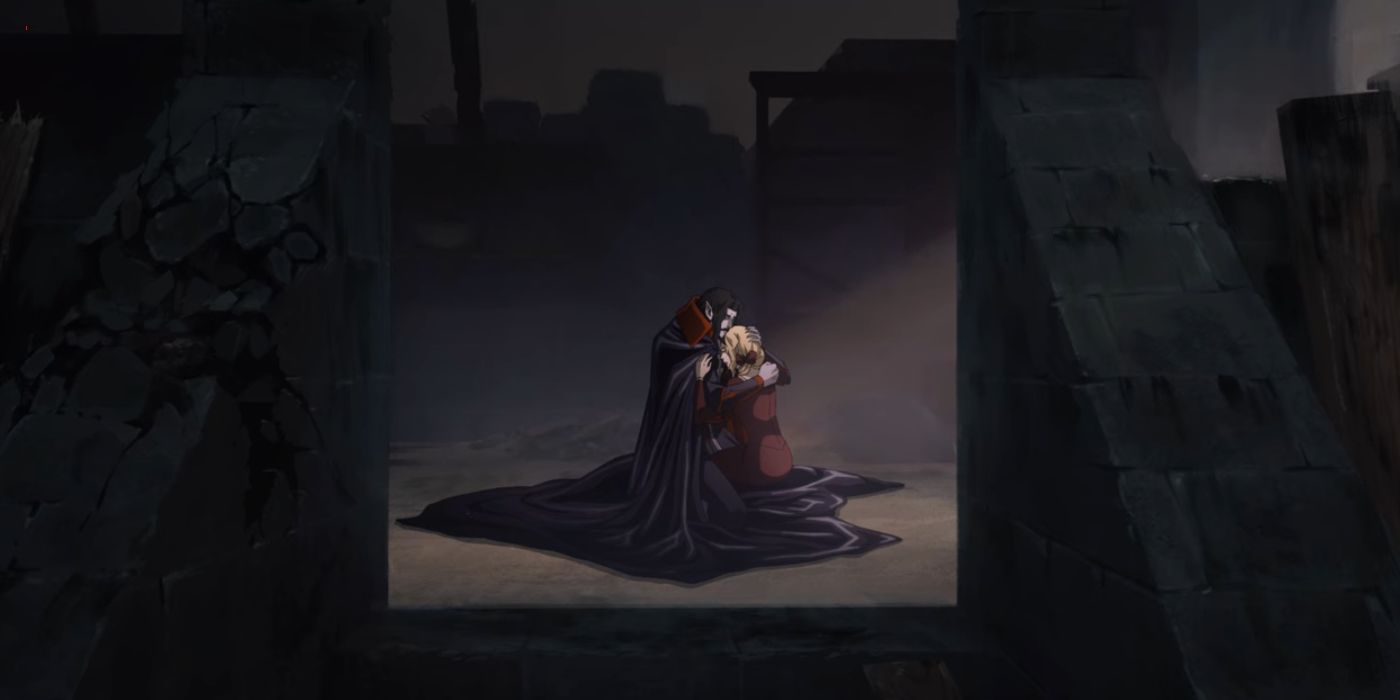
Throughout the third season, we are introduced to Prior Sala and the priory of Lindenfeld, a church that used to be followers of Christ until they were visited by a massive night creature months ago. Audiences soon discover Prior Sala and his followers are interested in opening a portal to Hell. In the final episode, Saint Germain discovers Sala and his night creature are trying to resurrect Dracula himself. This makes him somewhat similar to the video game character Shaft, who appears in both Castlevania: Rondo of Blood and Symphony of the Night, both of which revolve around Shaft trying to resurrect his master Dracula.
However, the idea of resurrecting Dracula is a recurrent threat throughout most of the games in the series. Dracula’s legacy lives on through his followers, and nearly every game in the Castlevania series follows one of Dracula’s many acolytes (be it Shaft, Carmilla, or even the avatar of Death himself) trying to resurrect the Dark Lord. Sometimes they even succeed, so it’s only a matter of time before we see the return of the Vampire Lord to the world of the living.
Trevor and Sypha’s Romance
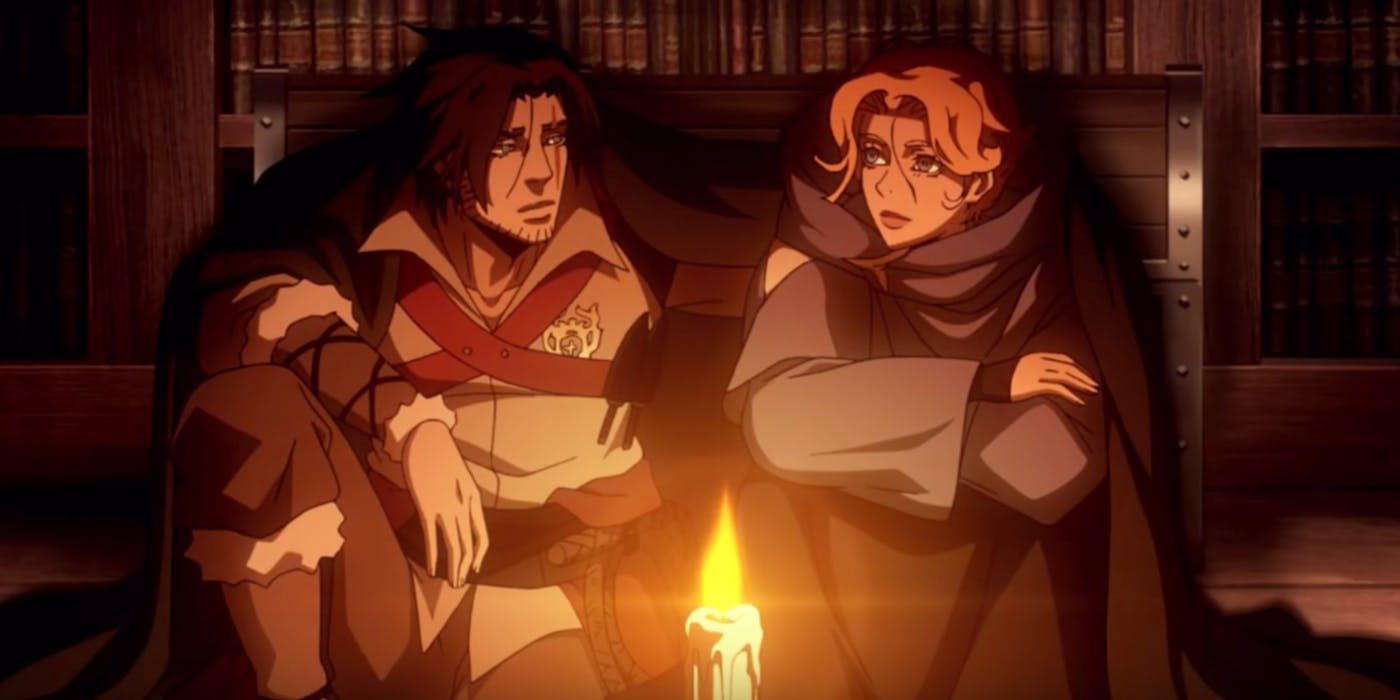
Season 3 of Castlevania leans heavily on the newly formed romance between series protagonists Trevor Belmont and Sypha Belnades. It’s teased in season 1, elaborated on in season 2, and it seems as if it’s fully established in season 3. This could end up being one of the most important elements for the rest of the series, as Trevor and Sypha also become lovers in Castlevania 3: Dracula’s Curse, the game the first two seasons of the show are directly based on. Since Dracula’s Curse is chronologically the second game in the series timeline, this means that all of the other Belmonts and offshoot Belmont descendants that follow (including Simon Belmont, the protagonist of the first two games released in the series) all come from the union between Trevor and Sypha.
This is huge, as it gives the Netflix series free rein to explore other timelines within the video game series. The feud between the Belmonts and Dracula is almost timeless, as Lament of Innocence reveals that Dracula’s best friend before becoming a vampire was Leon Belmont, who was forced to hunt his friend down after discovering his true nature. It’s here that the Belmont dynasty started, with the Vampire Killer whip (retitled the Morning Star in the Netflix series) passed down from generation to generation all the way until 1999, when Julius Belmont used it to defeat Dracula permanently by trapping his castle within a solar eclipse. It remains to be seen what Netflix and the creative team have planned for Castlevania season 4, but with the introduction of the Infinite Corridor and the relationship between Trevor and Sypha, it seems as if the possibilities are endless.
Link Source : https://screenrant.com/castlevania-season-3-video-game-easter-eggs-references/
